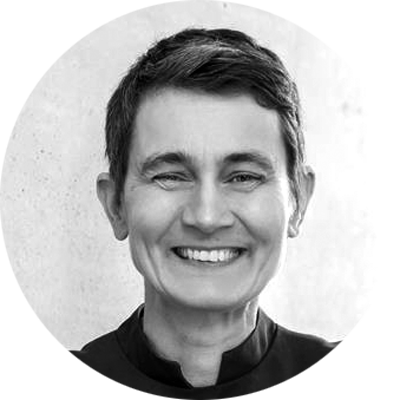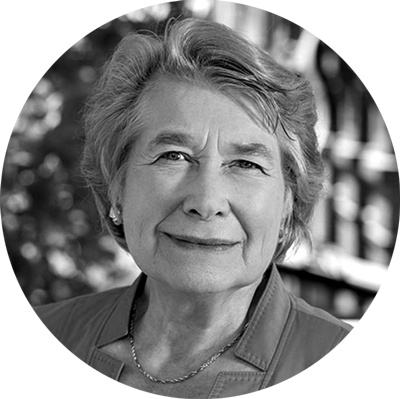22 November 2021
AUTHOR: LAINIE ANDERSON
From a site derided in the 1860s as a “nest of crime and vice” to its transformation into a one-stop-shop where experts will help companies grow, the story of 9-19 Light Square is a remarkable one.
By the end of 2022, the brightest minds from South Australia and around the world will be able to walk through the doors of the new UniSA Enterprise Hub on Light Square and have their ideas brought to life.
With the help of university experts, graduate talent and industry partners, they might turn moon dust into bricks for lunar buildings, or target lymph cancer with magnetic particles, or use artificial intelligence to improve a tennis serve.
It’s a giant leap for this little north-western corner of Light Square that initially boasted pubs, pawnbrokers and prostitutes.
For the University of South Australia, it’s a logical next step for an institution that’s always had industry at its heart. UniSA was recently ranked number one in Australia for industry research income – a legacy of fusing practical application and academia that stretches back to the 1800s with the creation of the SA School of Art and the SA School of Mines and Industries.
But what does the Enterprise Hub mean for the average South Australian?

Nine of the 30 startups destined for the Enterprise Hub will be dedicated to the space industry, helping to cement SA’s reputation as the space state and drawing talent from all over the world.
UniSA Deputy Vice Chancellor: Research and Enterprise, Professor Marnie Hughes-Warrington, says it means clever companies of the future can get their start in SA, increasing the likelihood they’ll invest here, employ here and help to grow the economy. "Australia doesn’t have that one dominant player like NASA, so we’re getting a lot of small players coming forward to collaborate, not compete,” says Prof Hughes-Warrington. “UniSA is increasingly getting calls from as far afield as Canada, the US and India.”
But the Enterprise Hub won’t limit its expertise to startups. UniSA’s Australian Centre for Business Growth will continue teaching business owners, chief executives and managing directors of small and medium companies all over Australia how to lead and manage growth. (In FY20, the year of COVID-19, the centre’s graduates reported an average compound annual growth rate of 24.6 per cent for profit, 13.3 per cent for revenue and 9.3 per cent for jobs.)
“The Enterprise Hub will provide a physical and virtual door to enter into collaboration with UniSA, whether you’re a startup, a not-for-profit or social enterprise, a large-scale business or a business wanting to scale up,” Prof Hughes-Warrington says.
“It will be a one-stop-shop where our experts across all disciplines can help companies to grow and entrepreneurs to develop a great idea. And, yes, some of those ideas will literally take off into space.”
That ‘physical door’ sits at the front of the heritage-listed Goldsbrough Mort building at 9-19 Light Square.
The landmark building – perhaps better known to many as the former Night Train Theatre Restaurant or Le Rox nightclub – was commissioned in 1910 for stock agents Messrs Bagot, Shakes & Lewis. The company had taken possession of the old James Hooker engineering yard on the north-western corner of Light Square, with the aim of creating a showroom for animal skins. They commissioned a young architect named Philip Claridge (later co-founder of Hassell) to design a building fit to sit beside what The Advertiser described as Light Square’s growing number of “substantial buildings in which important industries are pursued”.
With its detailed brickwork and repetitive arching, Claridge’s two-storey warehouse opened to widespread acclaim on Monday 1 April 1912. An enthusiastic newsman at The Register reported the building’s “roominess enabled the produce to be shown to the best advantage, and the arrangements made for the convenience of buyers were favourably commented upon”.
The building has changed hands – and fortunes – many times over in the intervening decades. That “roominess” amounted to almost 2000 square metres of open floor space, equivalent to more than seven tennis courts, in which to do business.
Goldsbrough Mort Skin Stores took ownership until 1965, trading in the pelts of everything from kangaroos and cats to wallabies and water rats. The company’s name remains imprinted across the top of the Light Square frontage.
By 1975, 9 Light Square was reborn as the home of The Netherlands Society of SA, with its annual Great Tulip Ball and Miss Tulip South Australia contest. One-time society president Hetty Verolme scoured Holland for a traditional street organ to bring a touch of her homeland to Adelaide, and told The Australian Women’s Weekly in 1978: “Five minutes after the organ started playing, everyone was waltzing in Light Square".
The ornate street organ was eventually lost to South Australia, but the building wasn’t done with music: reincarnated as a disco venue in the 1980s.
First it was Da Vinci’s International, complete with the birdcage entrance and posh booths divided by frosted glass partitions. Then came 1990s nightclub Le Rox and top international rock acts including Nick Cave & The Bad Seeds, The Pogues and The Velvet Underground. And finally, in the mid 1990s the Night Train chugged in, transforming the premises yet again into an award-winning comedy theatre restaurant.
By the time UniSA acquired the property in 2011, the building had been listed on the South Australian Heritage Register as of place of Local Heritage (City Significance) and lauded by the City of Adelaide as “a good example of the type of imposing industrial buildings which were constructed on the periphery of the central business area”.
“This is the perfect building for UniSA, because it’s never stood still – it’s been all kinds of things,” Prof Hughes-Warrington says. “The word ‘curriculum’ means river, and universities don’t stand still either.”
UniSA’s Innovation and Collaboration Centre associate director Jasmine Vreugdenburg works with up to 30 startups from SA and around the world at any one time. She says co-locating university academics and researchers with startups and industry in the Enterprise Hub will create exciting new opportunities for collaboration and commercialisation.
“Our startups are already doing great things in the world – an aerial mapping and intelligence system developed by SA company FireFlight Australia is collecting data in California right now to help firefighters on the ground and better predict how bushfires might travel or start,” Vreugdenburg says.
“An acoustic detection system for damaged wind turbine blades is going global too, with former startup Ping currently rolling out 1000 units across the US.
“I’m excited about the people we can bring together and the expertise we can bring to the table in the Enterprise Hub.”

“Since 2014 we’ve worked with more than 1250 business owners of small and medium companies. Those companies have created nearly 3000 jobs,” Dr Matthews says. “But most importantly the centre has helped nearly 2000 business owners and their executive team members understand what’s required to lead and manage a growth company. ANZ Chair in Business Growth and director of the Australian Centre for Business Growth, Professor Jana Matthews, has selected a group of growth experts (business owners who have started, grown and exited their own companies) to teach the structured growth programs she has designed. Each year they deliver programs funded by ANZ Bank and various state governments to small and medium companies all over Australia.
“This kind of collaboration between university, industry, governments and small and medium business is unusual and has been a win for all parties involved.”
Prof Hughes-Warrington says the Enterprise Hub’s primary goal will be to help South Australia accelerate its trajectory of growth.
“That’s our job,” she says. “We’re the University of South Australia – we want the economy to continue to grow, we want young people to think this is the place to be, and we want the people of South Australia to see the Enterprise Hub as part of our contribution to creating a greater understanding about the state’s capabilities.
“This is about an absolutely positive belief in South Australia – and getting the world to believe it too."
Photo credits:
Main image: This is a creative illustration of the UniSA Enterprise Hub on Light Square and not representative of the actual design.
1.State Library of South Australia flickr.com 8399493293
2.State Library of South Australia, B 3845
3.Frearson's Monthly Illustrated Adelaide News, 1 August 1881 p.117
4.State Library of South Australia, B 26894
5.State Library of South Australia, B 268941925
6.State Library of South Australia, B 26894
7.State Library of Australia, C+112/15
8.malcolmcallus.com/images/aussie_places/adelaide
9.Courtesy Fuller brand communication agency
You can republish this article for free, online or in print, under a Creative Commons licence, provided you follow our guidelines.


![Timeline for 9-19 Light Square Adelaide. Images include 1. Town Acre 70 circled in a portion of the cadastral map of the Adelaide survey ‘Plan of the City of Adelaide’ ([Adelaide, S. Aust.] : M.E. Sherrah, Government Photolithographer, [1948-1953] Reprint of 1890 - 1900 edition) (State Library of SA, https://www.flickr.com/photos/state_library_south_australia/8399493293) 2. The former Albion Inn, from Morphett Street immediately before demolition in 1911. The produce store to the left of the image was the former lodge and dance hall, while the former licensed house is to the right, with the hipped roofed structure partially demolished behind likely to be the original 1839 building (B 3845, State Library of SA). 3. Hooker’s Buildings along Hindley Street (to right of image), the Temperance Hotel at the corner of Hindley and Morphett Street, and the Salvation Army Hall (to left of image), excluding the inconveniently placed former Albion Hotel in Morphett Street between these new structures (Frearson’s Monthly Illustrated Adelaide News, 1 August 1881 p.117). 4. Bagot Shakes & Lewis Skin & Hide Store forming the six left bays of the two-storey building, with the four bays on the right being part of the 1920 addition for the garage which interconnected with the ground floor of the former Salvation Army Barracks building on the corner. Photograph taken in 1972 as demolition had commenced for the widening of Morphett Street (B 26894, State Library of SA). 5. An ad in The Northern Argus confirming Goldsborough, Mort & Co merges with Bagot Shakes & Lewis. (1925, March 13). (Clare, SA : 1869 - 1954), p. 7. Retrieved September 30, 2021, from http://nla.gov.au/nla.news-article100021631. 6. Bagot Shakes & Lewis 1920 Morphett Street Garage building with the adjoining former Salvation Army Barracks which had been converted into a garage in 1915. Photograph taken in 1972 as demolition had commenced for the widening of Morphett Street (B 26893, State Library of SA). 7. Dashed line showing intended widening of Morphett Street on Adelaide plan. No. 16 [cartographic material] / surveyed and drawn for the Fire Underwriters’ Association of South Australia by J.R. Ferguson [C 112/15]. 8. External embellishments for Night Train theatre restaurant, 2004 (http://www.malcolmcallus.com/images/aussie_places/adelaide/Night%20Train%20Theatre%20Restaurant,%20Adelaide.jpg). 9. Mock of what 9 Light Square might look like as University of South Australia’s Enterprise Hub, designed by Fuller brand communication agency.](/siteassets/enterprise/images/summer2021/chargelongtimeline300921.jpg)
